Below we will see the success story of a farmer who earned huge profits by cultivating crops through integrated farming methods. We will learn about Mr. Laxman Reddy’s Farm, how he developed the crops by integrated farming methods, his earnings, and his experiences. Let’s check out how this farmer earning 50 lakhs from his 5 acres farm below.
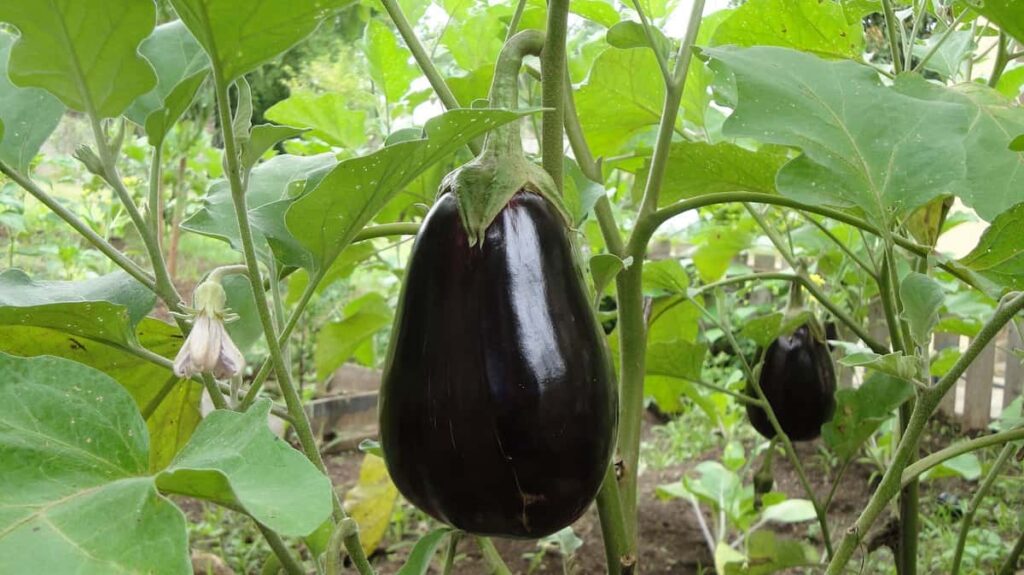
What is the meaning of integrated farming?
Agriculture, cattle, poultry, and fish can all be raised and kept in the same location under an integrated agricultural system, providing year-round revenue and job opportunities. Chickens, for instance, can be placed on the top layer, and their waste used. The pigs are on the bottom layer, and the pond’s leftover water is used to grow hay and other forage crops.
In many rural areas, we find coconut groves that have been cleverly intercropped with forage so that animals and chickens can graze. Integrated farming refers to the process through which waste products like human excrement are reused as fertilizer for vegetable and animal fodder crops. In an integrated agricultural system, crops and livestock are raised together to maximize the use of available resources.
What is the importance of integrated farming systems?
In its most basic sense, integration is the process through which one item is added and becomes an integral part of another. To optimize nutrient use and reduce environmental impact, farmers are increasingly turning to integrated farming systems (IFS), which are complex production systems based on a small number of crops, animals, and ancillary businesses.
To further emphasize the interconnected, interdependent, and interlocking character of IFS, one system’s main and secondary outputs are used as inputs to the other. The principal aims of IFS include:
- Maximizing the profit from each business to provide a more secure and robust cash stream.
- Bringing about a state of agro-ecological harmony and reviving the efficiency of existing systems.
- Maintain low intensity for insect-pests, disease, and weed populations via natural cropping system management.
- Providing people with nutritious food and a pollution-free environment by reducing the usage of chemical fertilizers and other toxic agrochemicals and pesticides.
- Early nutrient recycling increases the efficiency with which natural resources are used.
- Reducing the hazardous effects of farming or raising animals on the natural world.
The ideas of productive exploitation of agricultural wastes and greater utilization of existing resources and people informed the development of low-cost farming techniques in India that are well-suited to Indian circumstances. Fish farming, cattle husbandry, and crop farming have all found their way into modern farming thanks to the diligent study of the subject.
In case you missed it: How this Farmer Earning 60 Lakh Rupees from Thaiwan Pink Guava Cultivation
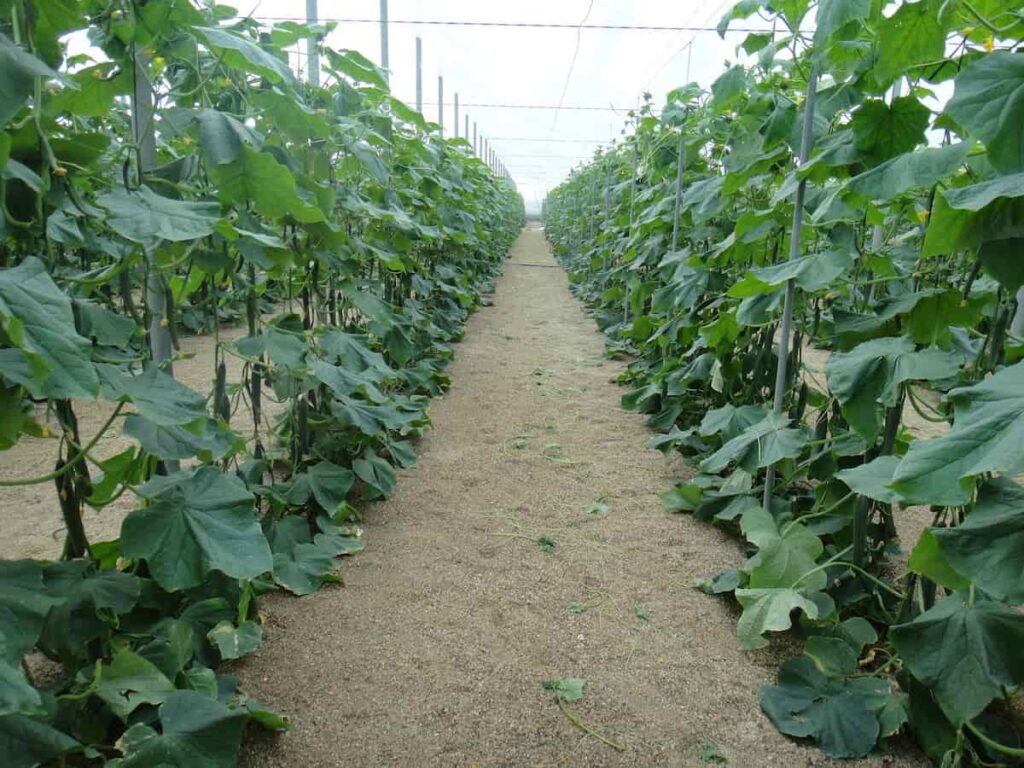
Developed and rigorously tested for economic viability and practicality at the farmer level, the packages of methods for fish-cum-pig, fish-cum-duck, and fish-cum-poultry farming have been widely adopted. Livestock dung is rich in nutrients and biomass; thus, spreading it in a pond can boost the population of beneficial microorganisms like phytoplankton and zooplankton that feed fish.
Manure contains indigestible feed elements that the fish then ingest. Fish farming is a great way to reuse food lost during feeding. The rich biomass of the pond’s bottom soil is periodically harvested and used as a fertilizer for nearby agricultural or vegetable fields.
What are the advantages of the Integrated farming system?
Farmer income is boosted by proper waste and material handling. The income per unit of land, labor, and time is maximized by agricultural intensification. When organic waste is used properly, soil retains its fertility for a very long period. Within the context of the integrated system, most trash is transformed, has value, and is utilized. An integrated agricultural system guarantees a steady flow of cash.
This implies that various agricultural industries that experience distinct seasons throughout the year can generate consistent profits. The most important factor is picking the correct fields to work in so that there are no income gaps. A more stable system is the result of using by-products. This way, the soil’s potential is protected as it is a foundation for industry. One farm can produce a wide variety of nutritious plants, each fortified with a wide range of essential nutrients.
This approach to boosting agricultural output has zero negative effects on human health or the natural world. We produce far less garbage as a result. Compared to other manufacturing methods, there is far less decomposing waste and pollutants in such an environment. Since chemical fertilizers and pesticides aren’t required to the same extent, the environment benefits from cleaner air, soil, and water. IFS paves the way for the expansion of the agro-industrial complex and the diversification of national output.
This sort of agricultural system lays the groundwork for the creation of cutting-edge innovations that will make farming in the future more secure, efficient, and lucrative. Due to the high price of new technology, modern farmers are forced to constantly seek novel methods of generating income. We can lessen our need for raw materials by switching to renewable energy. Biogas can be produced in a very effective manner via the use of organic materials. Thus, the energy issue can be put off until later.
In case you missed it: Earning 10 Lakh Rupees from Bamboo Cultivation: A Sucess Story of a Bamboo Farmer in India
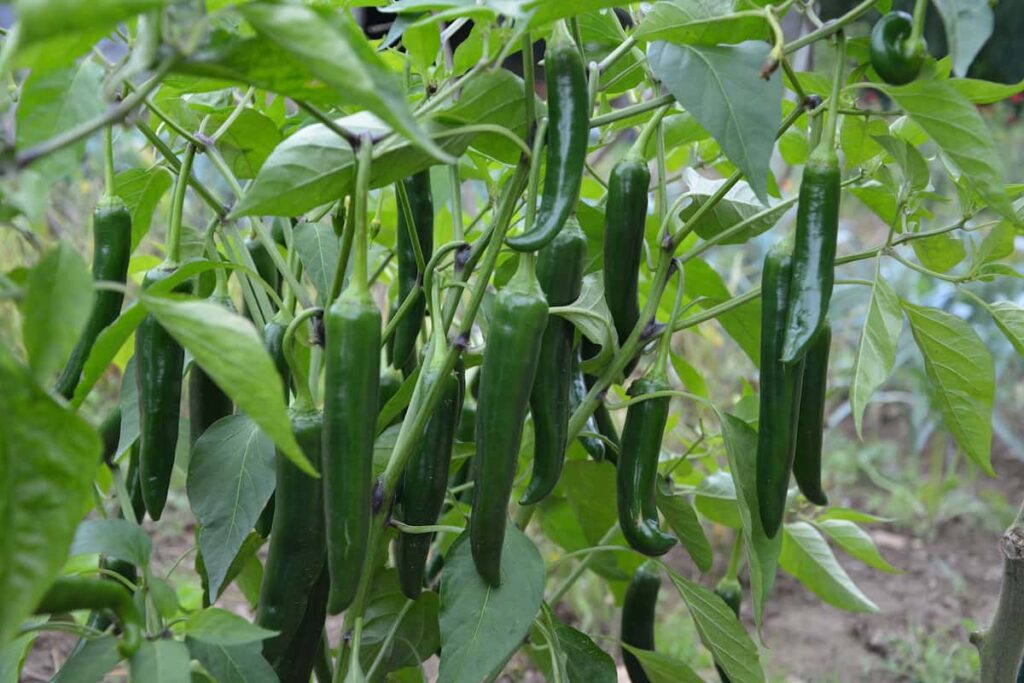
With efficient use of all available acreage, farmers never have to worry about their animals becoming hungry. Added work opportunities will reduce the impact of the jobless rate, and there will be sustained demand for human labor throughout the year. When a farmer engages in many sectors at once, and one of those businesses has a significant expansion, the others benefit.
What are the disadvantages of integrated farming systems?
Due to the unique characteristics of each area, the farmer can choose to combine; those hoping to reap the advantages of doing so should also be ready to shoulder the burden of doing twice as much work. Fish farming, livestock raising, and plant cultivation are sometimes at odds with one another.
For instance, chemicals that harm animals should not be used on plants. It’s crucial to know exactly what you’re getting yourself into. If you want to increase your harvest with manure but don’t want to overdo it and risk doing more damage than good, you need to calculate how much manure you’ll need. To avoid contributing to pollution, you need to have strong management and maintenance skills.
The advantages of integrated farming are highly debated among scientists. Some scientists believe that the spread of influenza can be prevented by avoiding mixing birds, pigs, and fish. WHowever, weknow that swine may serve as a breeding ground for human and avian influenza, leading to the emergence of novel, highly lethal strains of the virus. Although no hard evidence suggests this won’t occur, it’s best to stay on the safe side. Farmers shouldn’t breed pigs and chickens together for obvious reasons.
This farmer earning 50 lakhs from his 5 acres farm
The success story of Mr. Laxman Reddy
Mr. Laxman Reddy has been cultivating crops for five years. Unlike others, he is not growing just one crop on his 5 acres. Instead, he is cultivating many types of fruits and vegetables simultaneously. Also, with this, he is rearing a few cows and goats. This type of cultivation is known as integrated farming. From his 5-acre farm, he is getting nearly 50 lakh rupees yearly. How is this possible? Let us dive into the details of his 5-acre farm, and we will learn what crops he is growing and how much his profits are.
In case you missed it: Earning 8 Lakh Rupees from Spine Gourd Cultivation: A Success Story of Kantola/Teasle Gourd Farmer in India
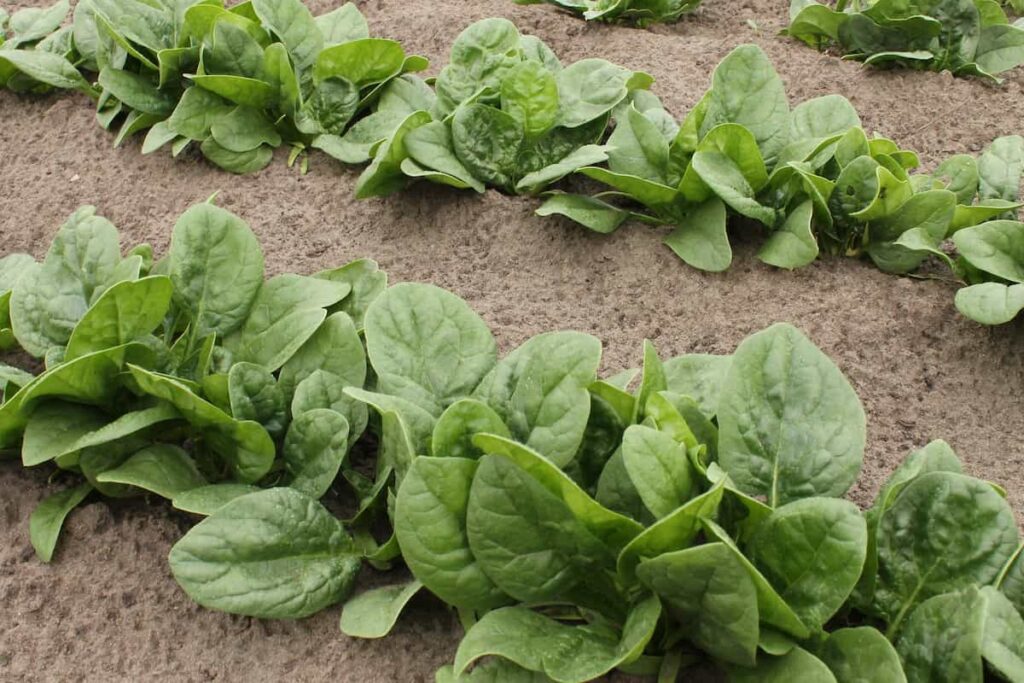
Cultivation details of Mr. Laxman’s Integrated farm
On his farm, Mr. Laxman cultivates many types of fruits. These include Thaiwan guava, custard apples, and passion fruits. However, Thaiwan guava is being cultivated on four acres, and most of his profits are from this crop. But that’s not it. In the last acre, he is growing 16 different types of vegetables. These include ridge gourd, capsicum, green chili, tomato, bitter gourd, brinjal, spinach, other leafy greens, radishes, cucumbers, shallots, etc. He is also rearing a few cows and goats in a separate space.
Unlike others, Mr. Laxman doesn’t sell his produce to the market. Instead, he has his outlet and will sell his crops daily through that outlet for market prices. This process cuts all the retailing costs, and he has a huge scope for profits. Also, his outlet is very famous in his village for its quality. The idea behind this is that the customer must buy all the crops from his outlet, so he need not go elsewhere for vegetables. If a customer gets all the vegetables he needs, that too quality ones, in one place, he will choose them, he added.
In case you missed it: Earning 24 Lakh Rupees from Polyhouse Chrysanthemum Cultivation: A Success Story of a Flower Farmer in India
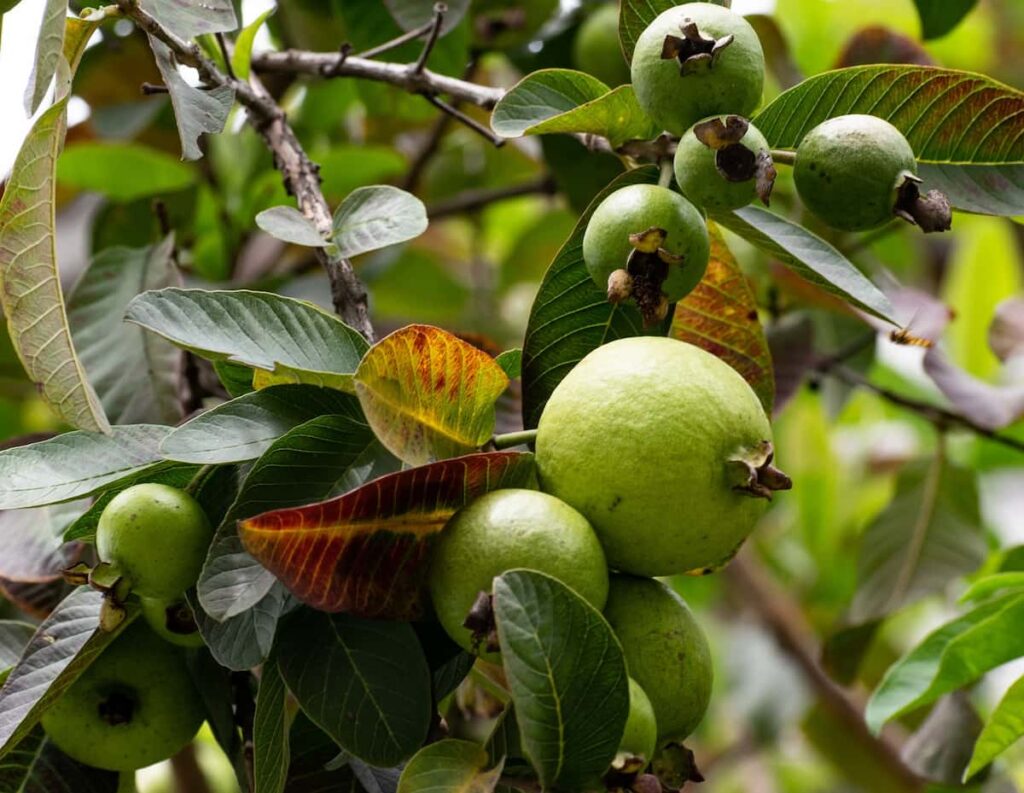
Mr. Laxman is cultivating four acres of Thaiwan guava, his major cash crop. It will yield twice a year; he has nearly 2000 plants on his farm right now. On his farm, the space between the guava plants in a row is 6 feet, and the space between the rows is 10 feet. He sells this produce at nearly 70 rupees per kg. He says that this plant has a continuous yield and a high market price if directly sold to the customers.
Also, he even used the fencing poles for cultivation. He started cultivating dragon fruits on the fencing poles, with nearly 300 dragon fruit plants on his farm. He says it’s a seasonal crop that will yield twice a year. It sells for nearly 70 to 100 rupees in the market, says Mr. Laxman. Between his one-acre and four acres of land, there was a 6 feet walkway with fencing poles on each side.
He turned this little walkway into a passion fruit farm. He used the pergola cultivation technique to grow passion fruit between the poles and has seen a huge yield. This pergola is also attractive and provides shade while walking between the farms. This passion fruit sells for nearly 80 to 100 rupees per kg. He said that he could get nearly 1,65,000 rupees from the passion fruit farm as a profit.
On his farm, there are nearly 2000 crops of Thaiwan guava, 300 dragon fruit plants, 30 java plum crops, 3 custard apple trees, Passion fruit pergola, and lemon plants. Mr. Laxman says that he gets nearly 35 to 40 lakhs as profit from these fruits, from which the majority share of profits is from Thaiwan pink guava plants. Mr. Laxman has another acre on which he grows vegetables. As mentioned above, he grows 16 types of vegetables in this one acre.
He grows all the essential vegetables required for the customer in day-to-day life. He harvests these crops daily, little by little. He says that he sells these vegetables in his outlet, and his daily income will be nearly 4,000 to 5,000 rupees. He says this gives him a continuous cash flow, and he will use this money for labor or his own family. This means he is earning nearly rupees 1.3 lakh per month from his integrated vegetable farm. He says that farmers should adopt this system so that they will get a continuous cash flow day by day.
Also, on his farm, Mr. Laxman uses natural fertilizers. He says he cultivates vegetables through organic farming to ensure quality yield. He also takes particular preventive measures for pests and uses pesticides only when necessary. For irrigation, Mr. Laxman uses a drip irrigation system. He says that a drip irrigation system is ideal for farming and reduces water wastage. He says that he prefers a drip irrigation system to a sprinkler system.
In case you missed it: Earning 1.3 Lakh Rupees from Coriander Cultivation in Polyhouse: A Success Story from Herbal Farming
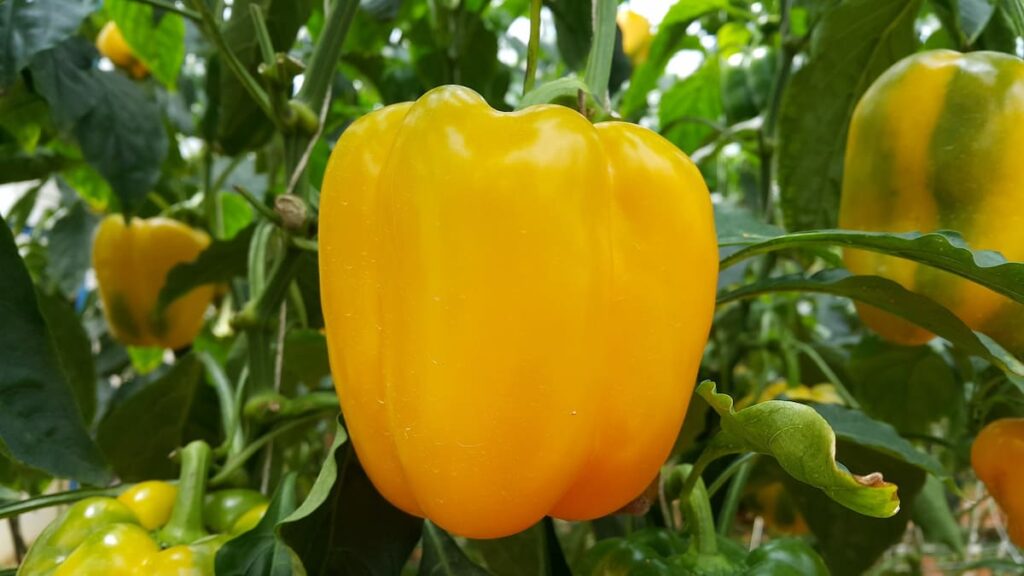
He also provides fertilizers to plants through these drip lines. This process is known as the fertigation process. This is an ideal method for fertilizing plants, he says. When fertilizing your plants, you have to do that after watering your plants, as the nutrients will sit near the roots of the plant instead of going out of reach from the roots.
Profit details of Mr. Laxman Reddy’s Integrated Farm
Mr. Laxman says that he gets a profit of nearly 40 to 50 lakh rupees from his farm per year. He says that his Integrated vegetable farming is a success because he can earn huge profits. He also advises people to start integrated farming by choosing what vegetables and fruits are in demand in their area.
Also, he says farmers should make a way to sell their produce independently. This helps them sell their harvest at a higher price. As a result, this will get them huge profits. In the end, Mr. Laxman says he is very happy with his Integrated vegetable farming and is looking forward to guiding people in this process if they need his help.
- Types of Pesticides Used in Agriculture: A Beginner’s Guide
- Economical Aquaculture: A Guide to Low-Budget Fish Farming
- 15 Common Planting Errors That Can Doom Your Fruit Trees
- How to Make Houseplants Bushy: Effective Tips and Ideas
- Innovative Strategies for Boosting Coconut Pollination and Yield
- Pollination Strategies for Maximum Pumpkin Yield
- The Complete Guide to Chicken Fattening: Strategies for Maximum Growth
- Natural Solutions for Tulip Problems: 100% Effective Remedies for Leaf and Bulb-Related Issues
- Revolutionizing Citrus Preservation: Towards a Healthier, Greener Future
- Natural Solutions for Peony Leaf and Flower Problems: 100% Effective Remedies
- Maximizing Profits with Avocado Contract Farming in India: A Comprehensive Guide
- Natural Solutions for Hydrangea Problems: 100% Effective Remedies for Leaf and Flowers
- The Ultimate Guide to Choosing the Perfect Foliage Friend: Bringing Life Indoors
- From Sunlight to Sustainability: 15 Ways to Use Solar Technology in Agriculture
- The Ultimate Guide to Dong Tao Chicken: Exploring from History to Raising
- The Eco-Friendly Makeover: How to Convert Your Unused Swimming Pool into a Fish Pond
- Mastering the Art of Delaware Chicken Farming: Essentials for Healthy Backyard Flocks
- 20 Best Homemade Fertilizers for Money Plant: DIY Recipes and Application Methods
- How to Craft a Comprehensive Free-Range Chicken Farming Business Plan
- Brighten Your Flock: Raising Easter Egger Chickens for Beauty and Bounty
- How to Optimize Your Poultry Egg Farm Business Plan with These Strategies
- Subsidy for Spirulina Cultivation: How Indian Government Schemes Encouraging Spirulina Farmers
- Ultimate Guide to Raising Dominique Chickens: Breeding, Feeding, Egg-Production, and Care
- Mastering the Art of Raising Jersey Giant Chickens: Care, Feeding, and More
- Ultimate Guide to Raising Legbar Chickens: Breeding, Farming Practices, Diet, Egg-Production
- How to Raise Welsummer Chickens: A Comprehensive Guide for Beginners
- How to Protect Indoor Plants in Winter: A Comprehensive Guide
- Ultimate Guide to Grow Bag Gardening: Tips, Tricks, and Planting Ideas for Urban Gardeners
- Guide to Lotus Cultivation: How to Propagate, Plant, Grow, Care, Cost, and Profit
- Agriculture Drone Subsidy Scheme: Government Kisan Subsidy, License, and How to Apply Online
- Ultimate Guide to Raising Araucana Chickens: Breed Profile, Farming Economics, Diet, and Care
- Bringing Hydroponics to Classroom: Importance, Benefits of Learning for School Students
- Ultimate Guide to Raising Polish Chickens: Breed Profile, Farming Economics, Diet, and Care
- Ultimate Guide to Raising Australorp Chickens: Profile, Farming Economics, Egg Production, Diet, and Care
- Silkie Chicken Farming: Raising Practices, Varieties, Egg Production, Diet, and Care
- Sussex Chicken Farming: Raising Practices, Varieties, Egg Production, Diet and Care